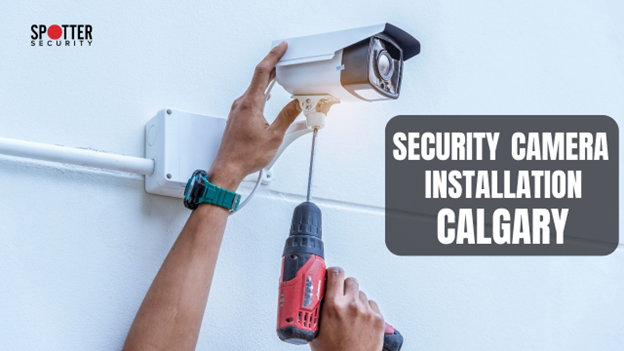Why Do Surveillance Cameras Glow Red Light at Night?

Have you ever spotted a soft red light silently guarding a property after dark? This red glow is a common sign of a security camera on duty.
But why red? Why isn’t it a calming green, a deep blue, or any other color? This article aims to demystify these red sentinels of the night, aiming to satisfy your curiosity and enhance your understanding. For those curious about enhancing their own home security, we’ll also delve into security camera installation in Calgary.
Basics of Surveillance Cameras
Surveillance cameras have become our silent guardians, our watchful protectors. They vary in shapes, sizes, and functionalities, but a common feature persists: the ability to see in the pitch black of night.
- The enigma of the red glow is unveiled through the principles of optics and electronics. Let’s dive into why the night vision of cameras is often associated with a crimson beacon.
- At the heart of a camera’s night vision is the ingenious use of infrared technology. Here’s how it gives cameras superhero-like vision after dark.
- Infrared LEDs are the unsung heroes, painting a picture invisible to the naked eye yet clear as day to the camera’s lens. We’ll explore their role in cutting through the darkness.
Color Red in Night Surveillance
Red doesn’t mean danger in this context—it means clarity. There’s a specific reason surveillance cameras use red instead of other colors.
While the infrared light is invisible, the LEDs emit a red glow detectable by humans. We’ll discuss how and why we can see it.
Benefits of Red Light in Surveillance
From deterring trespassers to capturing clear footage, the red glow plays a pivotal role in modern surveillance.
- Is the red light just for show, or does it have a psychological effect on would-be intruders? Let’s find out.
- When it comes to identifying a subject, color accuracy can be crucial. Red light assists in this—let’s understand how.
- It’s not just about the glow; it’s about the gaze. Surveillance cameras serve a greater purpose in our society.
- With cameras peering into the night, what does this mean for the privacy of the average Joe? It’s a hot topic worth examining.
Future of Surveillance Cameras
The future of surveillance cameras is likely to be shaped by advances in several technological fields, including artificial intelligence (AI), the Internet of Things (IoT), 5G connectivity, edge computing, and privacy-enhancing technologies. Here’s an overview of the potential developments in surveillance technology:
Advanced AI Analytics
- Behavioral Analysis: Future surveillance systems will be able to analyze behavior in real-time, detecting anomalies or aggressive actions before they escalate.
- Facial Recognition: With improvements in AI, facial recognition will become more accurate and may be able to identify individuals even in crowds or when partially obscured.
- Emotion Detection: Cameras may be able to assess emotional states, potentially being used in areas like airports to detect individuals who exhibit signs of stress or anxiety that might warrant additional screening.
Integration with IoT
- Smart Cities: Surveillance cameras will be integrated into the larger network of smart city IoT devices, allowing for more comprehensive urban monitoring.
- Home Automation: In residential areas, surveillance cameras will become a central part of home automation systems, interlinked with other smart home devices.
Conclusion
We have underscored the significance of the red glow, a crucial aspect in nocturnal surveillance, emphasizing its vital role. As advancements in technology progress, the nature of these vigilant guardians may transform, yet their unwavering purpose endures: to ensure Spotter Security maintains a vigilant watch, safeguarding our surroundings around the clock.